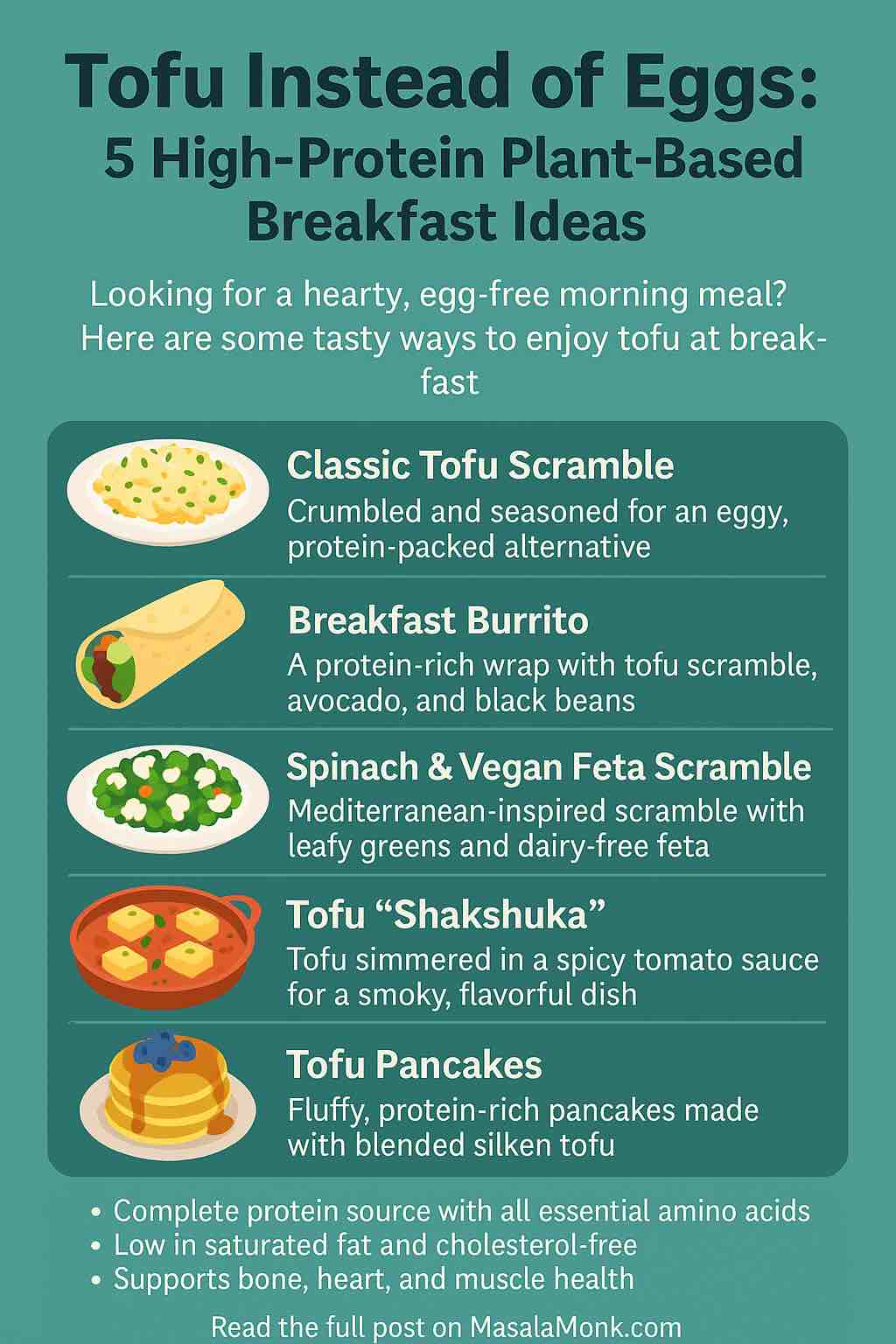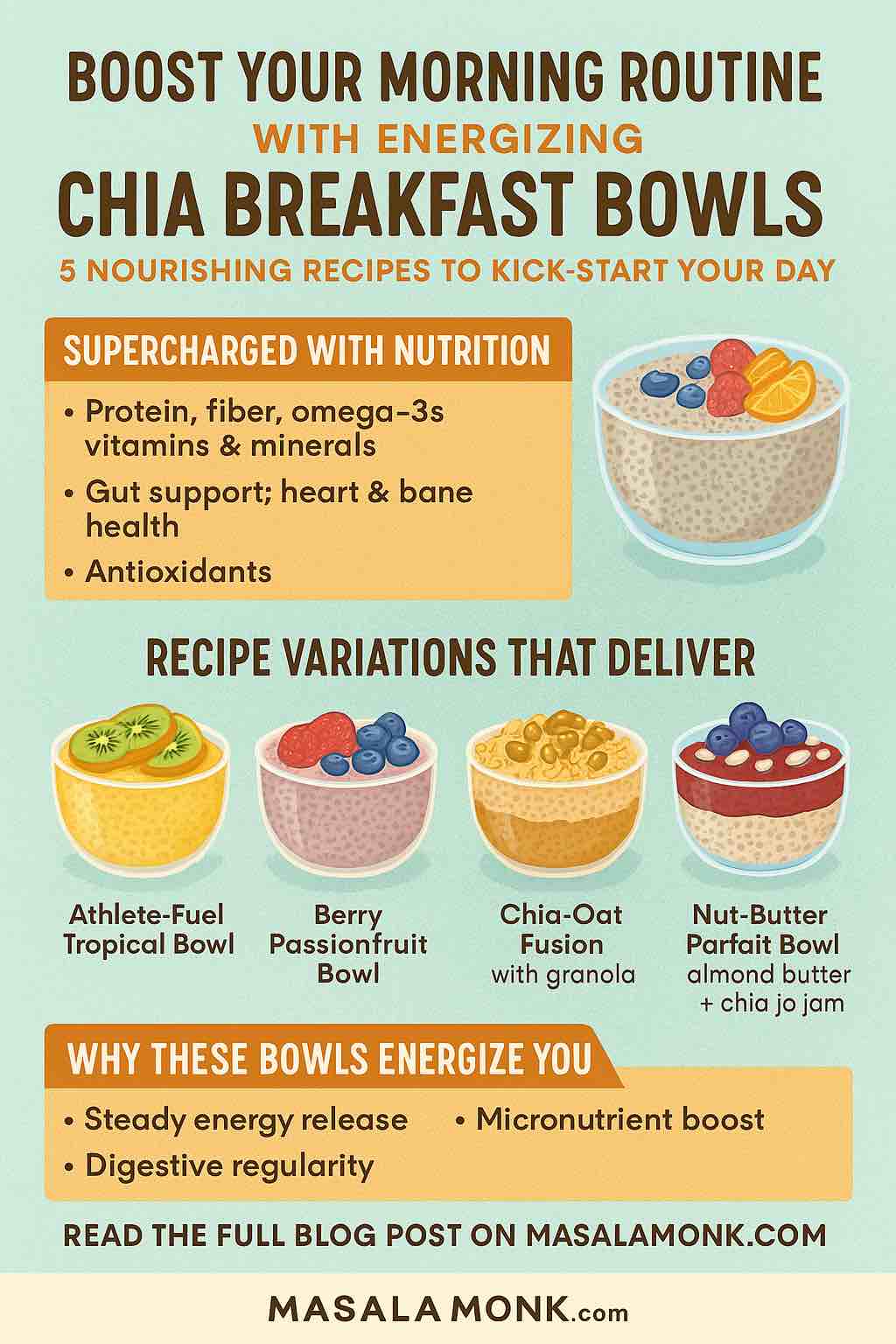
Whether you’re vegan, managing cholesterol, navigating food allergies, or just curious about clean eating, there’s never been a better time to explore tofu as a nutritious, high-protein breakfast star.
In 2025, with more people opting for plant-forward meals (or managing GLP-1-related appetite changes), tofu has surged in popularity as a complete protein and egg alternative. It’s versatile, affordable, low in saturated fat, and—when cooked well—just as satisfying as your favorite egg dish.
Let’s dive deep into five high-protein, plant-based breakfast ideas using tofu, plus practical tips, nutrition science, and ways to make them delicious and repeat-worthy.
🍳 1. Classic Tofu Scramble (Eggy and Protein-Packed)
🥄 What It Is:
A scrambled egg substitute made by crumbling tofu and cooking it with spices that mimic egg flavor—like turmeric and kala namak (black salt).
💪 Protein Power: ~15–20g per serving
Use ½ block of extra-firm tofu + nutritional yeast + veggies.
🧂 Key Ingredients:
- Extra-firm tofu (pressed)
- Turmeric (for color)
- Kala namak (egg-like sulfur flavor)
- Nutritional yeast (cheesy, umami boost)
- Olive oil or plant-based butter
- Garlic/onion powder
- Optional: bell peppers, spinach, mushrooms
🔪 How to Make It:
- Press the tofu for 10–15 minutes to remove excess water.
- Crumble tofu into a hot, oiled pan.
- Add turmeric, kala namak, garlic/onion powder.
- Stir-fry for 6–8 minutes, adding veggies toward the end.
- Finish with nutritional yeast and herbs.
🧠 Bonus: Add 1 tbsp tahini or plant milk for creaminess.
🌯 2. Protein-Packed Breakfast Burrito
🥄 What It Is:
A wrapped version of the tofu scramble, bulked up with black beans, avocado, and whole grain tortillas.
💪 Protein Power: 25–30g per burrito
Combining tofu + legumes = protein synergy.
🌯 What You’ll Need:
- Tofu scramble (as above)
- Cooked black beans (½ cup)
- Avocado slices
- Whole grain tortilla
- Salsa or hot sauce
- Optional: sautéed kale, vegan cheese
🔪 Assembly:
- Warm the tortilla.
- Layer in tofu scramble, beans, avocado, and add-ins.
- Wrap, fold, and toast lightly on a skillet if desired.
- Slice and serve with a dip or wrap in foil for grab-and-go.
🧊 Meal Prep Friendly:
Make 3–5 burritos at once, wrap in foil, and refrigerate/freeze for later.
🌱 3. Spinach & Vegan Feta Scramble
🥄 What It Is:
A Mediterranean-style tofu scramble with iron-rich spinach and dairy-free feta.
💪 Protein Power: 18–22g per serving
Tofu + greens + vegan cheese = nutrient-dense start.
🧂 Ingredients:
- Tofu (firm or extra-firm)
- Baby spinach
- Vegan feta (look for almond/cashew-based versions)
- Olive oil
- Lemon zest or juice
- Oregano
🔪 How to Make:
- Sauté spinach in olive oil until wilted.
- Add crumbled tofu, cook with spices.
- Fold in crumbled vegan feta and lemon zest.
- Serve with pita bread or grain toast.
🧠 Nutrition Note:
This breakfast delivers calcium, iron, magnesium, and healthy fats in one plate.
🍅 4. Tofu “Shakshuka” – Middle Eastern Twist
🥄 What It Is:
Inspired by shakshuka, this dish uses cubed tofu in a spicy tomato-harissa sauce.
💪 Protein Power: 20g+
Whole-food rich and flavor-forward.
🔥 What You Need:
- Firm tofu, cubed
- Canned tomatoes (or fresh)
- Harissa paste or chili flakes
- Onions, garlic, bell pepper
- Cumin, smoked paprika
- Cilantro or parsley to garnish
🔪 Method:
- Sauté aromatics in oil.
- Add tomatoes, spices, and simmer into a thick sauce.
- Stir in tofu cubes, simmer 10 minutes.
- Serve with crusty sourdough or naan.
🧠 Tip: Add chickpeas for extra fiber and texture.
🥞 5. Tofu Protein Pancakes
🥄 What It Is:
Silken tofu blended into pancake batter for a high-protein, fluffy breakfast stack.
💪 Protein Power: 15–18g per serving
Especially when topped with nut butter or seeds.
🧂 Ingredients:
- ½ cup silken tofu
- 1 banana
- ½ cup oats or whole wheat flour
- Plant milk as needed
- Baking powder, cinnamon
- Optional: flaxseed, vanilla extract
🔪 Instructions:
- Blend all ingredients until smooth.
- Pour into a nonstick skillet and cook like pancakes.
- Stack, drizzle with almond butter, maple syrup, or berries.
🧠 Great for kids or post-workout breakfasts.
🧬 The Nutritional Science Behind Tofu at Breakfast
Recent studies show that soy-based foods like tofu can:
✔️ Support muscle maintenance
✔️ Improve heart health (lower LDL cholesterol)
✔️ Provide all 9 essential amino acids
✔️ Deliver iron, calcium, magnesium, and B-vitamins
✔️ Promote longevity when replacing animal proteins (Harvard, 2024 study on dietary patterns)
✅ Pro tip: For even better amino acid balance, pair tofu with beans, whole grains, or seeds.
🛍️ Quick Shopping List
Here’s a weekly tofu-friendly grocery starter kit:
| Essentials | Add‑Ins | Spices & Flavor |
|---|---|---|
| Extra-firm tofu | Spinach, kale | Turmeric, cumin |
| Silken tofu | Avocados, bell peppers | Kala namak (black salt) |
| Black beans | Vegan cheese | Nutritional yeast |
| Whole grain tortillas | Mushrooms | Garlic/onion powder |
| Plant milk | Bananas, oats | Harissa, paprika |
🧠 Final Thoughts: Why Tofu is the Breakfast MVP in 2025
- It’s clean, complete, and cholesterol-free.
- Tofu breakfast recipes are customizable, batchable, and nutrient-dense.
- Unlike processed meat substitutes, tofu is minimally processed and globally accessible.
Whether you’re vegan, experimenting, or just looking for a delicious alternative to eggs—tofu is worth a try (or five).
🔟 Frequently Asked Questions (FAQs)
1. Is tofu actually a complete protein like eggs?
Yes. Tofu, made from soybeans, contains all nine essential amino acids, making it a complete protein—just like eggs. It also offers fiber, calcium, iron, and heart-healthy fats, which eggs do not.
2. Which type of tofu should I use for breakfast recipes?
- Extra-firm or firm tofu for scrambles and burritos (holds shape well).
- Silken tofu for blending into pancakes, smoothies, or creamy sauces.
3. How do I make tofu taste more like eggs?
Use kala namak (black salt) for a sulfurous, eggy flavor, plus turmeric for color and nutritional yeast for umami. Pressing the tofu and sautéing it with onion/garlic powder also boosts taste.
4. Can I make tofu breakfast recipes ahead of time?
Yes! Most scrambles, burritos, and tofu shakshuka store well in the fridge for up to 3–4 days. Burritos can also be frozen and reheated quickly in a skillet or microwave.
5. Is tofu safe to eat every day?
For most people, yes. Multiple studies confirm that moderate daily soy intake (1–2 servings/day) is safe and may even help reduce the risk of heart disease, osteoporosis, and some cancers.
6. Can I get enough protein from tofu at breakfast alone?
Definitely. A typical serving (½ block or ~150g tofu) has 15–20g of protein. Adding beans, seeds, or whole grains boosts the total to 25–30g—comparable to or better than eggs or meat.
7. What’s the best oil or fat to use when cooking tofu?
Use olive oil, avocado oil, or plant-based butter for best flavor and nutrition. Avoid highly processed seed oils or margarine if you’re going for a clean, whole-foods approach.
8. Can kids eat tofu for breakfast too?
Yes. Tofu is safe for kids and toddlers, as long as it’s cooked properly and not overly salty. Use silken tofu pancakes or mild scrambles with fun shapes or sauces to make it appealing.
9. Is tofu breakfast good for weight management or fitness?
Yes. Tofu is high in protein and low in calories, helping you stay full longer. It’s especially useful if you’re building muscle, managing blood sugar, or using GLP‑1 medications like Ozempic.
10. Where can I find kala namak and other tofu-friendly ingredients?
Kala namak is available at Indian/Asian grocery stores, online (e.g., Amazon), or in specialty spice shops. Nutritional yeast, vegan feta, and harissa can be found at health food stores or Whole Foods-style retailers.










